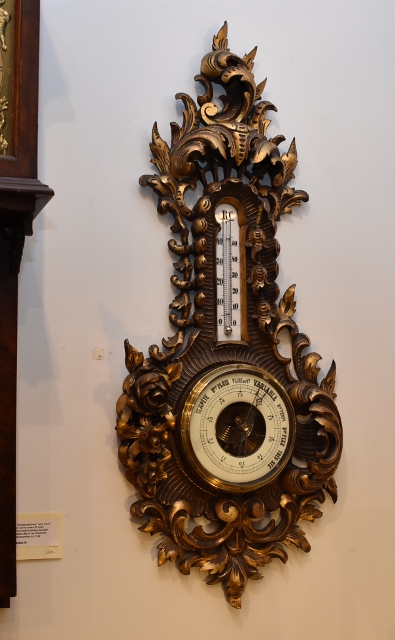Understanding the different types of barometers and its uses
When it comes to barometers there are essentially three kinds, mercury, aneroid, and digital. All three perform the same function, they measure atmospheric pressure, but all three are used in different circumstances and locations. Two of the three are also collectible, with one of those two typically being far more valuable than the other. Not surprisingly, modern digital barometers are not collectible, they are designed to be built as cheaply as possible, and lack the visual appeal and ornamentation of their less advanced predecessors.

The Original Barometers
The first barometers are quite amazing when you think about it. When it was discovered that mercury would rise in a tube based upon atmospheric pressure, the barometer was born. It took some time to refine the design, but once it was perfected, mercury barometers proved to be very accurate, an amazing feat considering they were basically a tube with a tray of mercury at the bottom.
The original mercury barometers were accurate, but they were limited. They were typically only found in wealthy homes and businesses since the high cost of mercury meant manufacturing them was expensive. One of the more remarkable things about this style of barometer is how ornate they tend to be. Since mercury was expensive, and they were only going to be purchased by people of well above average finances, these barometers were usually virtual works of art. After all, if you are going to sell an item to a wealthy client, you need to have it be an item that they will be proud to have displayed in their home. The competition to produce and sell barometers drove the designs forward, with some truly remarkable and beautiful barometers produced as a result.
Out of the three types of barometers, the original mercury ones are by far the most collectable. When you think about what drives collectability, antique mercury barometers check all the boxes. They are rare since not many could afford them. They are also usually beautiful because they were luxury items.
Aneroid Barometers
While the first barometers were very accurate, they had significant limitations that made them impractical in many situations. First, relying on mercury they were very expensive limiting how many people could afford them. Second, mercury is a liquid, so using a barometer that relies on a liquid in a moving object would produce unreliable results. Fortunately, the aneroid barometer solved both problems.
Aneroid barometers removed mercury from the design. This resulted in a barometer that is significantly less expensive than a mercury barometer, and also one that can be transported and used on moving objects. Aneroid barometers became smaller and more refined, leading to the pocket barometer, and with that their use on ships and planes dramatically increased. While not as accurate as their mercury counterparts, the portability and lower price caused aneroid barometers to spread and become much more common than mercury barometers.

The fact that they are more common, combined with the lower price, and less ornate decorations has resulted in one drawback, aneroid barometers are not as collectable or valuable as mercury barometers. There are some that might be valuable, but as a general rule of thumb, mercury barometers are more beautiful, better made, and more collectable than aneroid barometers.
